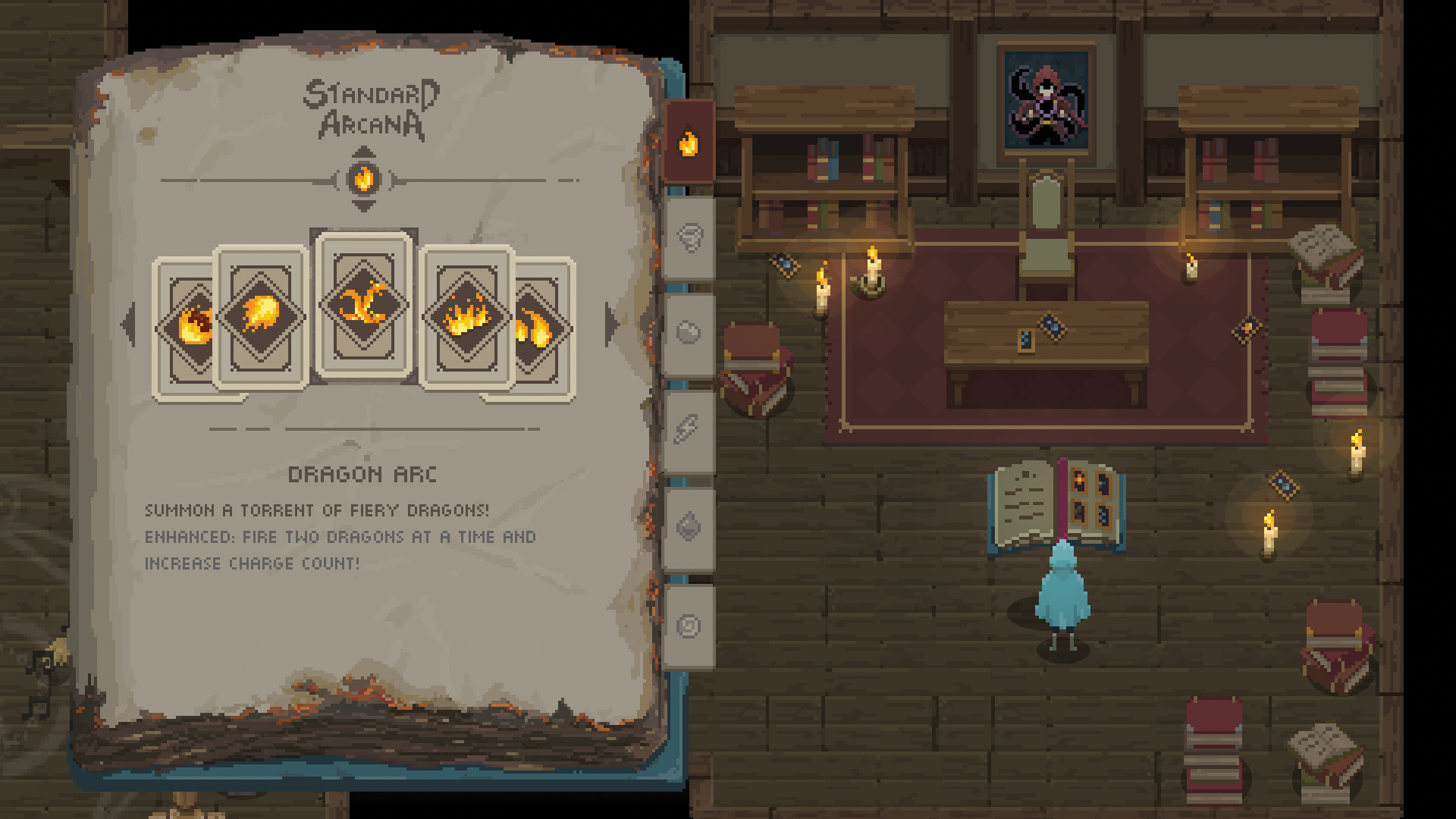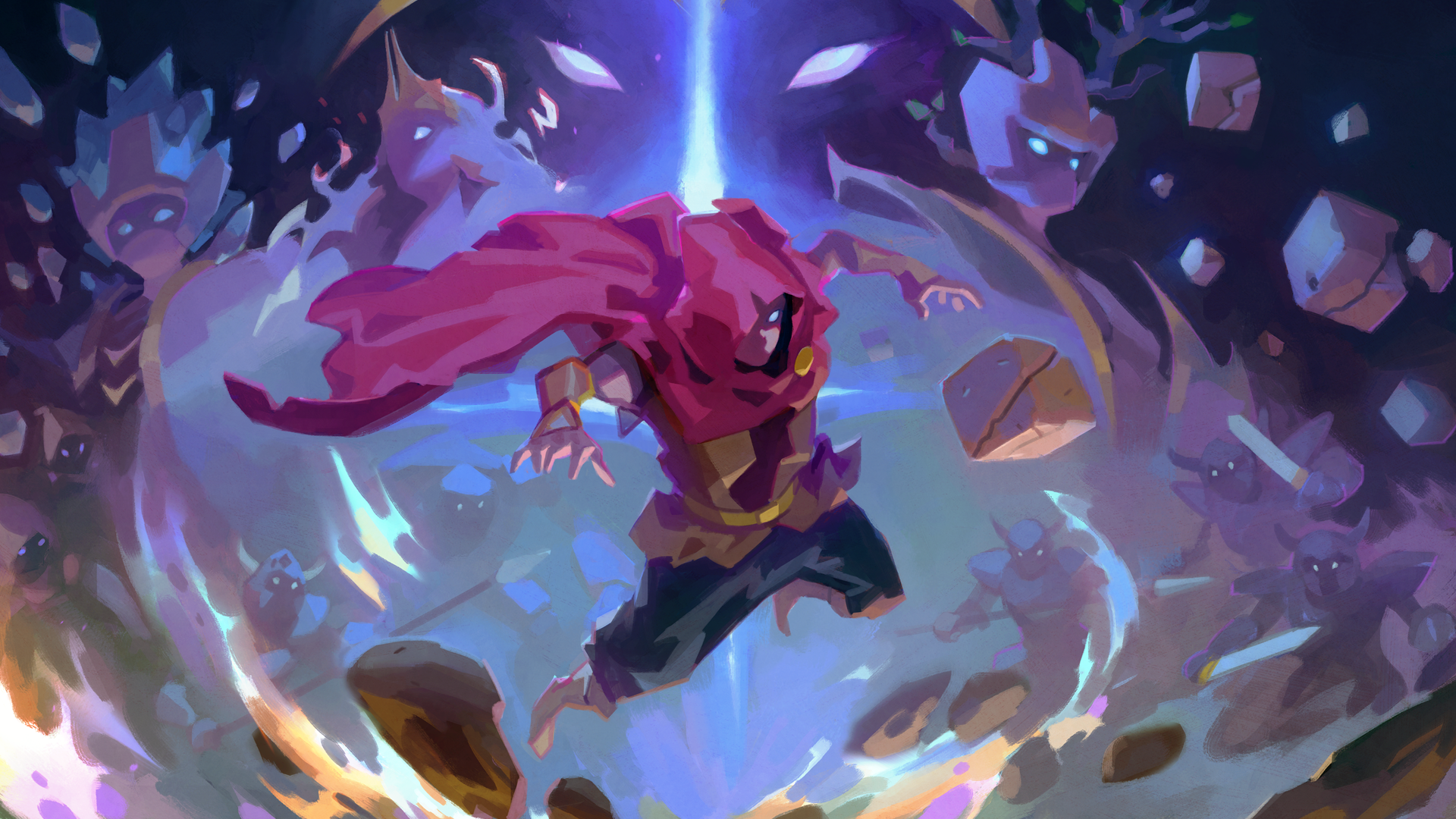The Chaos Trials haven’t seem like a pretty big deal. Your first glimpse into this wild world of wizardry is a walking tour through a museum built to educate visitors about the importance and power of arcana, the awe-inspiring Council of Magic, and the perversion that is chaos magic-born minions of evil. The Trials would allow brave souls to run a gauntlet, pitting them against the combined might of all of those things, with lucky victors being given the title of Wizard of Legend
All that was a while ago, though. There’s no reason to believe that a stroll through this collection of old magical artifacts would be anything but completely safe and not at all ripe for some sort of magical accident that would change the course of your life forever…

*Arrested Development narrator voice* There was.
A freak accident sends you back in time, and enters you into the Trials. After lots of trial and error, patience, frustration, and lots and lots of combos, you too may walk the path of the Wizard of Legend Even if you never cross that finish line, the journey is fun and addicting, even if it feels somewhat familiar and unfair at times.
As a run-based roguelike, each trip into the Trials in Wizard of Legend is a randomly generated one, with each level being a new arrangement or familiar rooms, traps, and pathways. Each section of the trials are separated by which Wizard Council member controls it. The three pairs of stages take on the overall motifs of these bosses – Freyja’s ice mastery will be present not just in the level’s tileset and hazards, but in the enemies that populate the levels. The order in which you traverse these three sets of dungeons is also randomized, so if Earth dungeons were the first stage in a previous run, than Fire could replace it next time.

There are only three elemental boss types, but several more elements to be harnessed and used against them in the for of arcana. Arcana are magical attacks, of which you can bind four at a time initially, each creating your wizard’s moveset. Arcana not only come in several elements, but all sorts of types of attacks – melee flurries, long range projectiles, dashing grapples, AOE bombs, etc.
Battle is also modified by Relics, holdable items that can be equipped and found during runs that enhance your play in some way. Some allow you to gain more gold than normal from enemies, others will reduce certain types of elemental damage you take. You can only equipped one to start, but any you find in the field are added to your inventory, and compound the effects into a kaleidoscope of modifiers that make each playthrough even more unique.

In the midst of a good run, where the monsters are bringing it, but you’re locked in, dashing and blasting foes left and right, there’s a transcendent connection you can have with Wizards of Legend. Like Enter the Gungeon, the constant chase for the next good run can have you reloading the Trials into the wee hours of the night before you even realize that your putting tomorrow’s productivity in jeopardy.
Like Phantom Trigger and Hyper Light Drifter, there is a real attention to making contact feel meaty and rewarding in Wizard. When big melee attacks land, there’s just enough sound and screen shake and knock back to feel palpable and strong without feeling like Saitama. Big moves, like when you have enough meter to unleash suped up versions of your signature arcana, feel like epic and valuable game changers that make earning the next one top priority.

It’s not all perfect, though. This game excels in it’s moment to moment exchanges, but character customization is done before you ever know what the threats ahead are. When in your home base outfitting your arcana and relics, or at the market buying new ones with Gems that you’ve earned through running the Trials, the strategy you’re putting together is completely blind. More often than not have I brought an Earth-heavy loadout only to find out that Atlas, the Magic Council member of Earth, was my first target. It dampens the effectiveness of my whole kit before I’ve slung my first spell.
The answer obviously take more diverse kits, but what it tends to do is actually just make me steer away from certain groups of arcana altogether so I don’t pigeonhole myself. There are few, random chances to adjust your arcana loadout mid run, but they cost Gold, and selections are unreliable. You can spend gems to guarantee which dungeon you’ll start in, but that seems like a strange and arbitrary way to keep an already challenging game more difficult.

There’s also a problem with how the game tells you certain information. Most of the tutorial is in the prologue, of you walking through the magic museum with tour guides pointing out the finer points of magic (read: the controls) to you. But mini-bosses, for example, punctuate each level. Their boss rooms house a tombstone with three skulls on it, which seem to correlate with the amount of enemies killed in the level. The more you kill, the lower the skull rating, which seems to translate to a less intense fight. Maybe? Probably.
I can also assume that certain elements are the weakness of others, but there’s no explicit chart or distinction. In a game with six elements, some of which are routinely interchangeable in other games (like Ice/Water or Air/Lightning) something like that would be an easy way to ease needless confusion.

Closing Comments
Even with these details being over-looked, and the story being shallow (though the writing humorous), the focus here is clearly the fast and furious wizard combat, that Contingent99 really nails. It treads pretty similar water of contemporaries like Binding of Issac, but has a unique and tangible style that really helps Wizard of Legend strike out on its own.
Wizard of Legend was reviewed on a retail PlayStation 4 with the game provided by the publisher. Wizard of Legend is also available on PC, Xbox One, and Nintendo Switch






